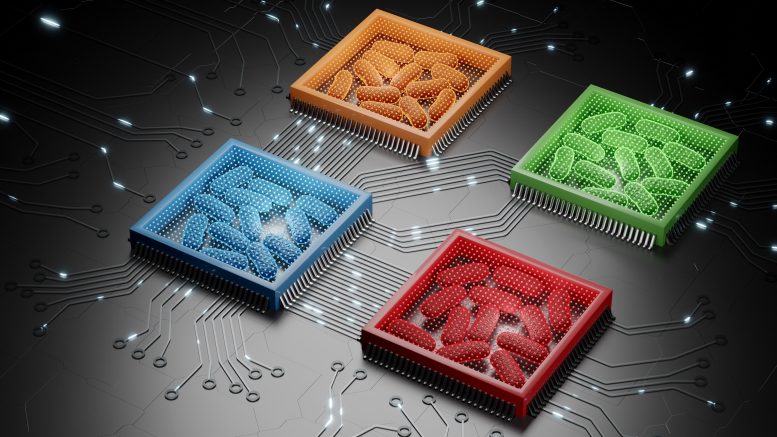AI Used by Scientists to Decode Bacterial Communication

A deeper comprehension of how bacteria communicate has brought us nearer to controlling and coordinating bacterial behavior. This image is courtesy of Ekaterina Osmekhina/Aalto University.
Scientists have employed machine learning and laboratory testing to gain a better understanding of the unique communication methods used amongst bacteria. This knowledge of bacterial interaction and circumstances interfering with their communication helps researchers to address issues involving drug-resistant bacteria, while also promoting the growth of biocomputing technologies.
The current study expands upon previous research, where the scientists proved that disrupting bacterial communication is a successful strategy against multidrug-resistant bacteria. Bacteria rely on small molecules for communication and infection coordination; the team discovered that by obstructing this communication and blocking these molecules, inflammation was reduced and the bacteria became more susceptible to antibiotics.
Furthering their research, the scientists have delved deeper into understanding the distinct languages bacteria use to communicate. By combining machine learning with hands-on lab experiments, they were able to scrutinize all approximately 170 recognized bacterial languages. The resulting analysis of these languages’ similarities and differences can be used to halt harmful bacteria and to construct beneficial 'bacterial logic circuits'.
The initial step involved machine learning, which grouped the languages based on the structure of their molecules. The groups comprised languages with more similarities to each other and differences from other languages. This grouping is akin to human language categories; English, French, and Dutch belong to one group, while Arabic and Hebrew belong to a different group.
Following this, the team proved experimentally that bacteria can somewhat understand related languages. In a 'bacterial language check,' bacteria using very similar languages could understand each other akin to how a Dutch individual might understand some German. Moreover, bacteria communicating in vastly different languages could not comprehend each other, akin to a multi-lingual conversation involving Finnish, Dutch, and Arabic. This research was led by Christopher Jonkergouw, a doctoral student.
These tools have led the researchers to accurately estimate the connections between bacterial languages and predict their comprehensibility. These insights will be instrumental in further honing the team's novel treatment method, and hold significance for biotechnology, since bacterial languages could potentially be used to coordinate tasks amongst bacterial communities or even within bacterial microprocessors.




